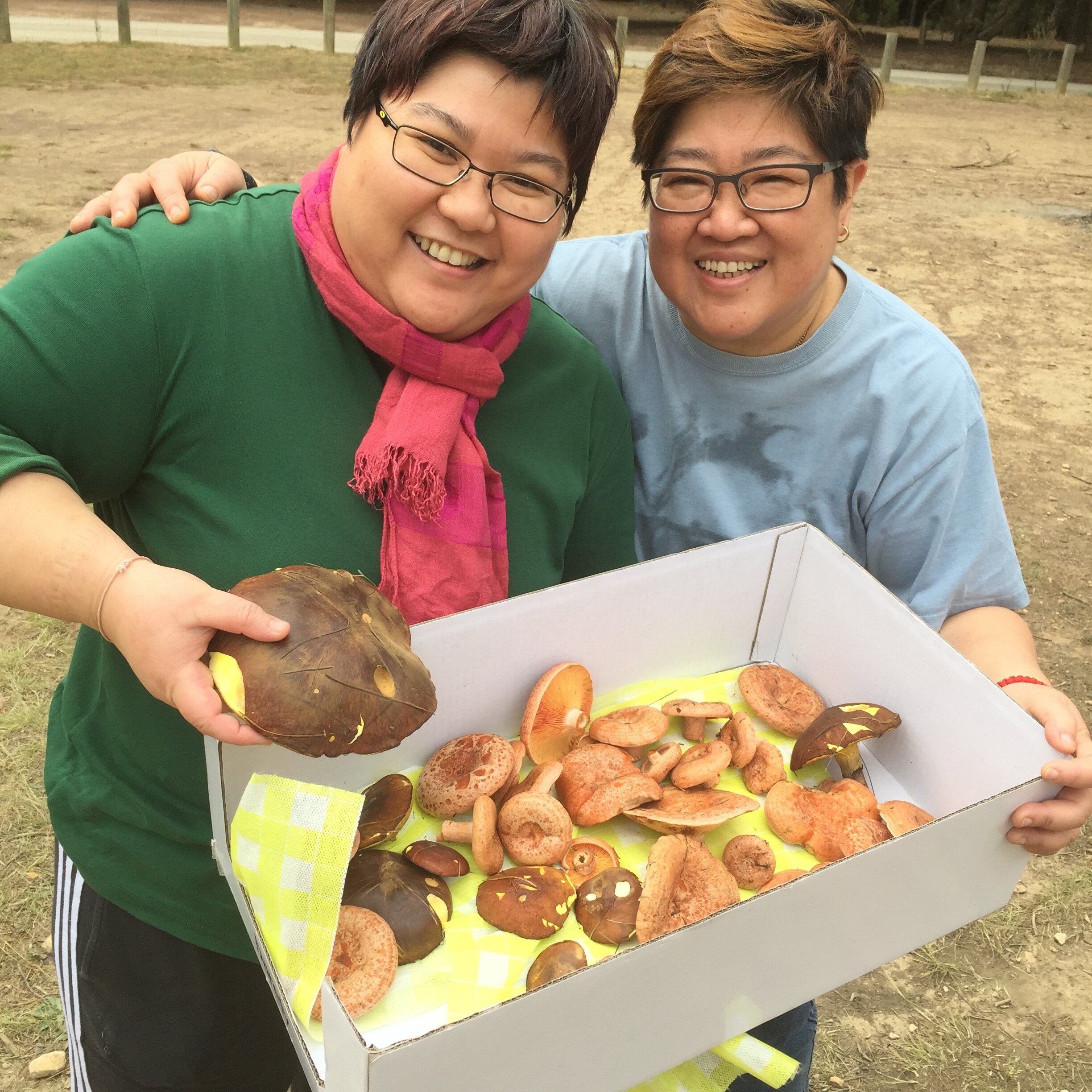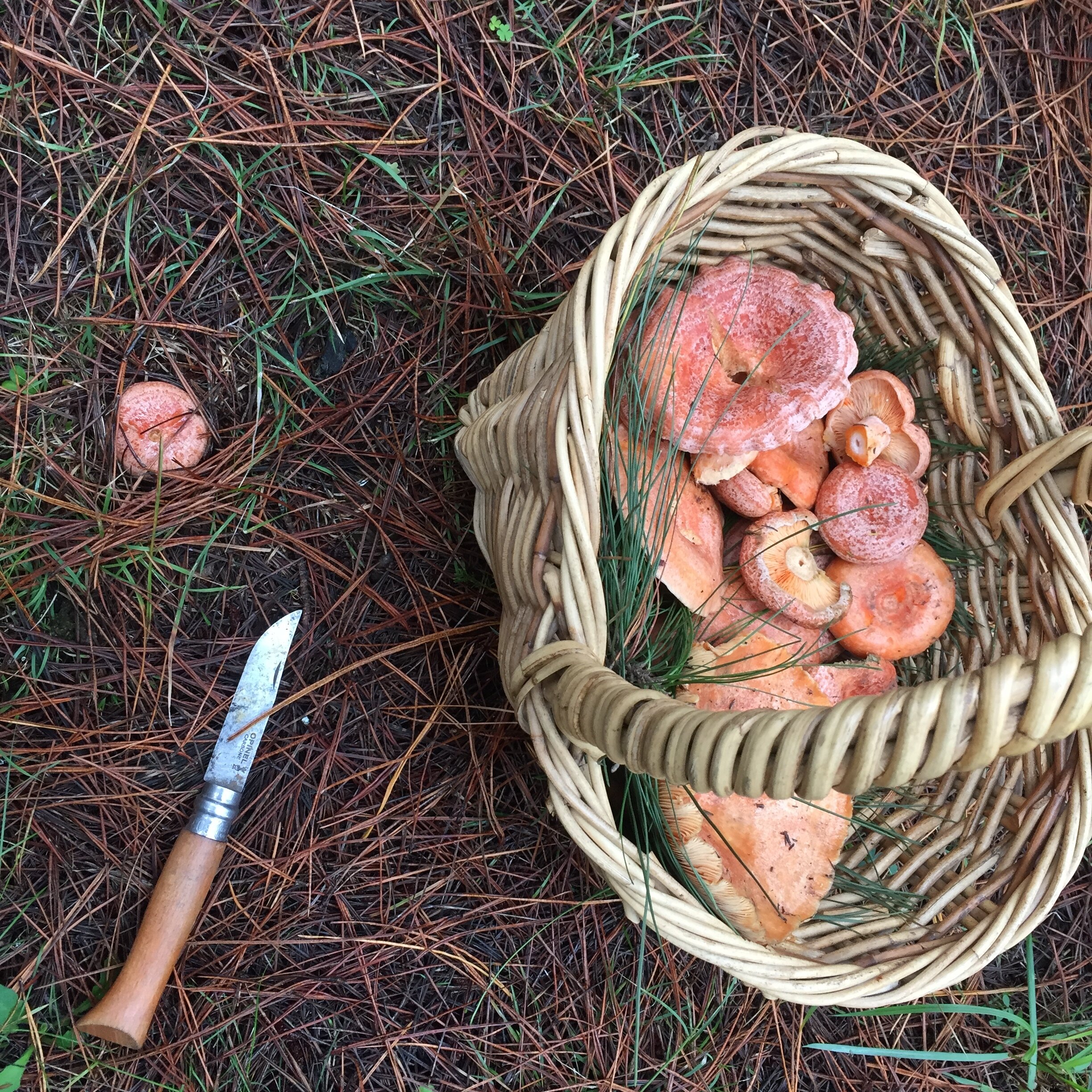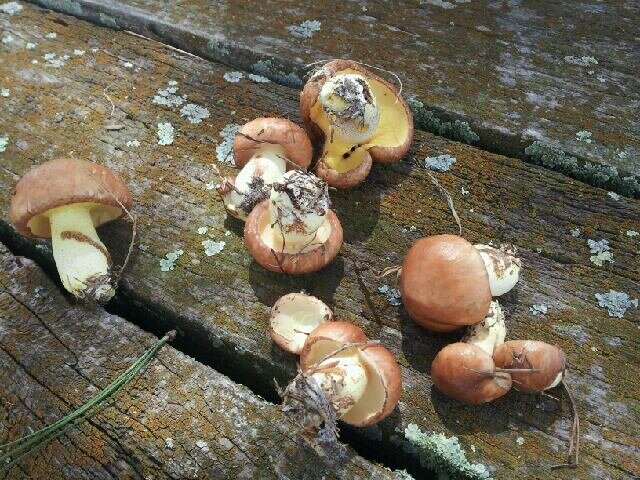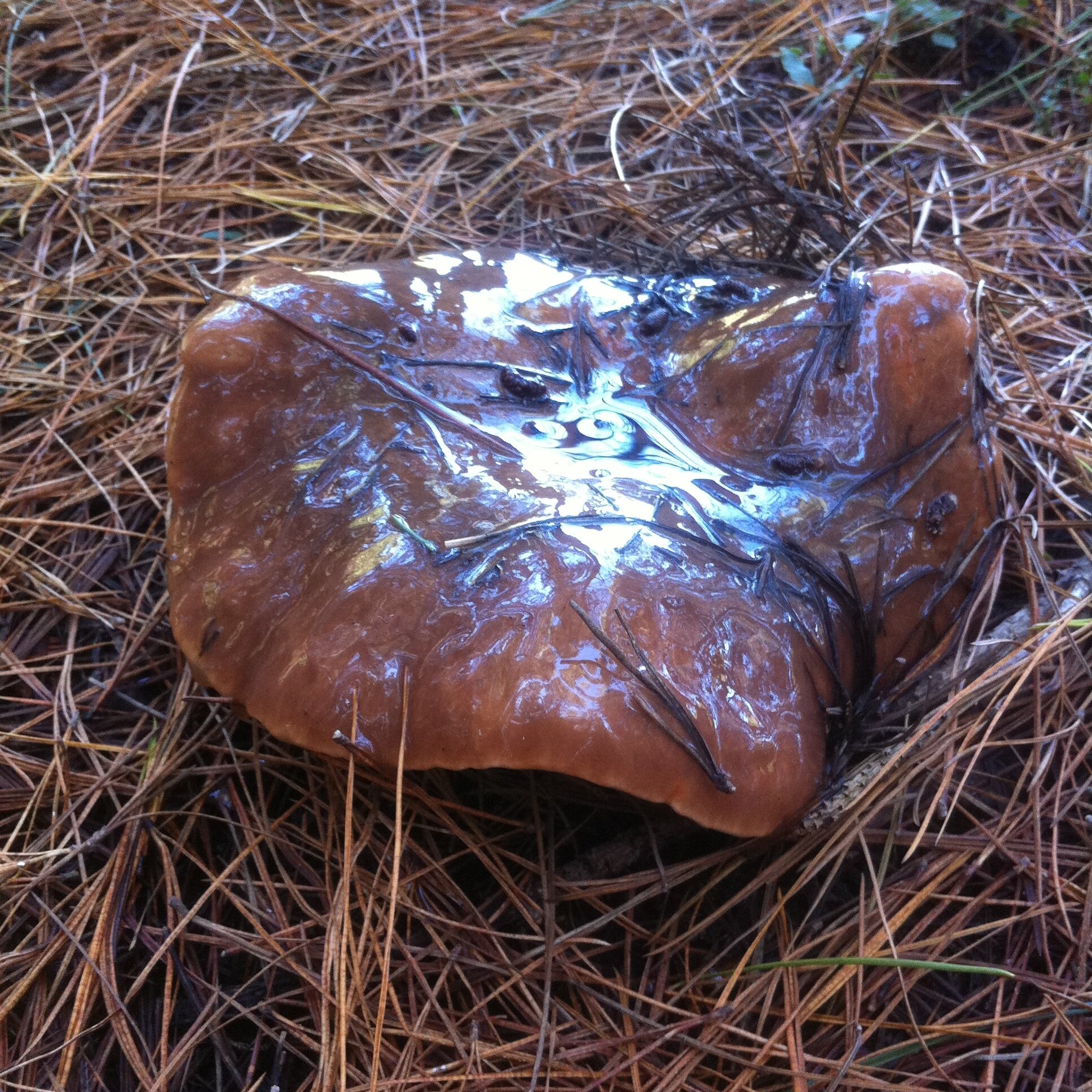It's raining, it's pouring.. are the mushrooms ready yet?
This is me in Penrose State Forest teaching how to harvest edible mushrooms, back in 2011. Image by Sireshan Kander.
This post wants to bring out what I learned in my years as an edible mushrooms forager (since I was a kid) and the past decade of offering workshops on where, how, when and why of harvesting edible mushrooms in pine plantations in Australia.
Check out the current workshops here>
Harvesting edible mushrooms is addictive. Once you experience the thrill of filling your basket with those luxurious treats, you become obsessed with the activity. Year after year you wait for months keeping an eye out on the weather, you fret if fires come close to the forest you know and love, and you suffer when the drought does not allow for ecosystems to thrive.
Because of what I do and the fact that there is a lot of obsessed people out there eager to get into the forest, with this post I want to answer the questions that are starting to pop up in my inbox as the season near:
Are the mushrooms ready yet?
How do you know when is a good time to go mushrooming?
What are the signs for a successful outing so that you have a better chance to find pine mushrooms?
OK, this is how it happens: it is the end of Summer, or even early Autumn and it rains, and all at the sudden your garden's mycelium comes to life ( that is the organism underground that produces mushrooms ). And if it is not in your garden, it is in your pot plants, or the local park, or the local green verge on the way to work. Mushrooms everywhere!
And then people start to think: Uh, mushrooms, can I eat that? Or better still, I wonder how the pine mushrooms are going, I know I can eat those!
Yes, because there are a lot of mushrooms out there, but very few are edible and even less are excellent. Pine mushrooms are some of the latter: delicious!
Please have a look this post about the amazing things you can find amongst pines in Australia, as this article below is about reading the clues.
It’s raining, it’s pouring, are the edible mushrooms ready yet?
Ok, here it is. First the basics.
Pine edible mushrooms are Slippery jacks -Suillus luteus - and Saffron milk caps - Lactarius deliciosus. There are more things in the forest ( again, read this ) but those two are pretty much the most loved. They are also very similar in behaviour and preferred conditions.
Please note not all states in Australia allow you to harvest mushrooms in public land. In NSW it is fine to harvest edible pine mushrooms in State Forests, See here for the list of forests, as long as is not for commercial purposes. If you are making money with it (including running workshops) you need a licence. On private land, you do what you want- provided you have the owner authorisation to collect mushrooms. Similar rules apply to Victoria while South Australia is way more strict. Check your local state’s regulations
Saffron milk caps, Lactarius deliciosus. Great in casseroles, frittata or schnitzel style.
Rain. No rain, no mushrooms.
And I mean more than a storm or two. It needs some soaking rain leading up to the season ( the summer rains) but also the top-up rains during the season, to get the fruiting body of the mycelia (the mushrooms) grow and prosper. Even just gentle rain, but regular, that's what's going to make the difference.
Now, if you live next to the forest you would know what the conditions are, but if you, like me, live in the city, you want to check conditions before you jump in the car for your weekend mushroom hunt activity. SO, here is the tools I use: Bureau of Meteorology.
This website is massive, and it is easy to get lost, so head here to Rainfall and River Conditions and select where in Australia you are, and from there you will see this kind of mapping:
But that’s just what happened in 24 hrs, so to make sure you got a good understanding of the conditions, head to the data tabs. In my case, I am looking at the closest data chart to the forest I love, Penrose State Forest. Here there is all of the rain that dropped on your forest (or close by) all the way back to the start of records!. Just select Monthly Rainfall from the menu, select your location and voilá!
Ok, do not get scared by nerdy charts as In our case you really only want to concern yourself with last year’s data. You will quickly note that last year we had very small rain. Record lows. SO, the big water that you saw in the picture before all at the sudden does not look to be so big anymore, does it?
That’s the situation in my spot. You should find your forest on the map and check the data. Once you have the data you can appreciate the situation.
Temperature. Mushrooms don’t like it when is too hot or too cold. They like it when is just right.
The ideal temperature for our prized produce is between 0 and 12 degrees. If it is not cold enough the mycelia would not start fruiting, if it gets too cold for too long, the system shuts down.
Now, there are plenty of nerdy data about temperature variations here
But for our purpose, it is sufficient to just check your weekly forecast here>. Again, select your spot and consult the weather.
Here below is my local spot ( or close by).
Amazing isn’t it? You now have a clear idea of the temperature range. Again, check that it goes down, but not too low.
SO, would that be it? You check rain and temperature and if it all lines up you’re set to fill your basket?
Yes and no. Because mushies are unpredictable, and just because conditions are right does not mean they are out there.
And here comes the folk knowledge.
In my old land (Italian Alps) we were taught of the moon phases, and how they influence water bodies (mushies), waxing moons being auspicious. They said that the rising moon was very good for anything controlled by water, including the ocean (tides), plants, fishes and … mushrooms!
They said that the best time to go out mushrooming is after the new moon all the way to when it is full. While the worst time is after the full moon, particularly when is about to finish..
I am not divulging too much into this, and let you make up your mind, but I just put this link here for some fun facts about moon’s influences. Great starting point for a twenty tabs research journey.
Or you can read about this on Wikipedia here, that pretty much debunk every single assumption that the moon has anything to do with it all. Enjoy the trivia!
Anything else?
There is an old saying around the Polish/Italian communities here in Sydney that whatever the weather, by Easter Sunday you get your pines. Anyone else would like to comment on that one?
So, now the last question that I get asked a lot. Will it be a good year this year?
Honestly, I don’t know. I personally doubt we'll have a season to brag about this year, as despite the rain falling right now on the East Coast of Australia, the soil moisture has been severely compromised in the recent past.
That said, I never witnessed sudden biblical downpours (300mm in some places in 24 hours!) straight after a year so dry. Also, let us not forget so fast that we had fires out of control for most of the East Coast up to last week. Uncharted territory for me, so I'll hold my judgement for now.
One last thing. As you plan ahead to go out and fill your basket with edible mushrooms this coming season, please stay clear from burned areas. As a good friend and fungi nerd Alicia said: “If the forest is still living (you won’t get pine mushrooms in a dead burnt pine forest) fire stimulates a lot of fruiting in most mushroom forming fungi, especially when followed by good inundation of rain. It’s a way of them recovering and spreading themselves over a denuded landscape. Some species, especially like morels, go crazy.
I personally hope hobbyist mushroom collectors go easy this season to help the soil spore bank build back up and the mycelia recover.”
Moreover, lots of wildlife has had a pretty tough time of recent, stay away from burned forest, for the forest, for the wildlife and for the mushroom’s sake.
That said, there are plenty of pine forests out there that did not burn. Use the lure of mushrooms as a way to build awareness of cycles and weather patterns. In my opinion, one of the most important side benefits of collecting mushrooms is connecting. Learn from nature, there are so many stories to benefit from. Once you understand you will appreciate.
Good luck with your hunt! See below for some amazing pictures>>













